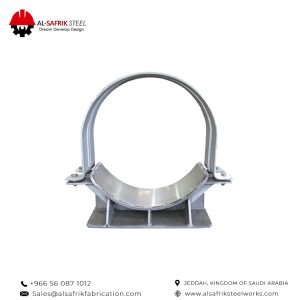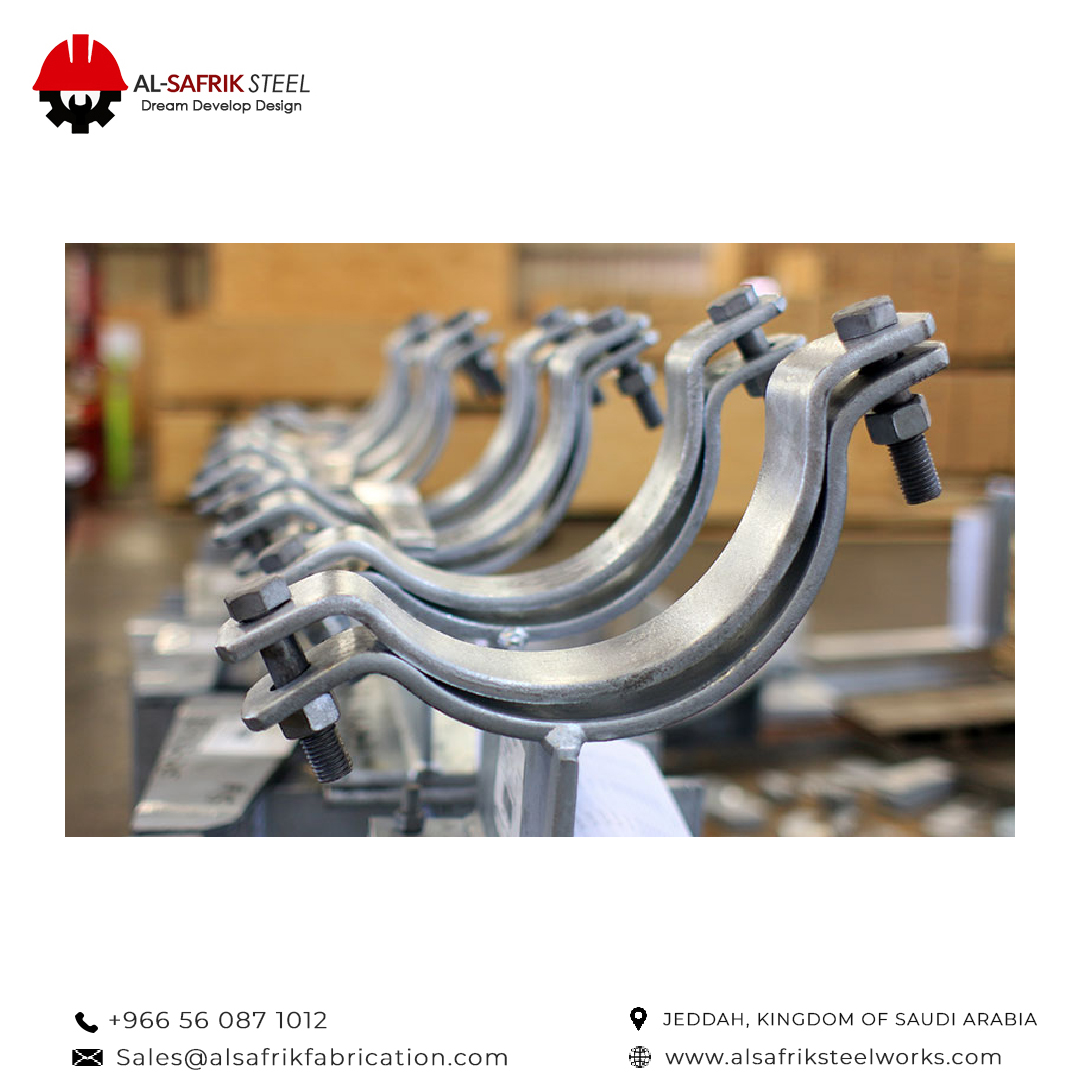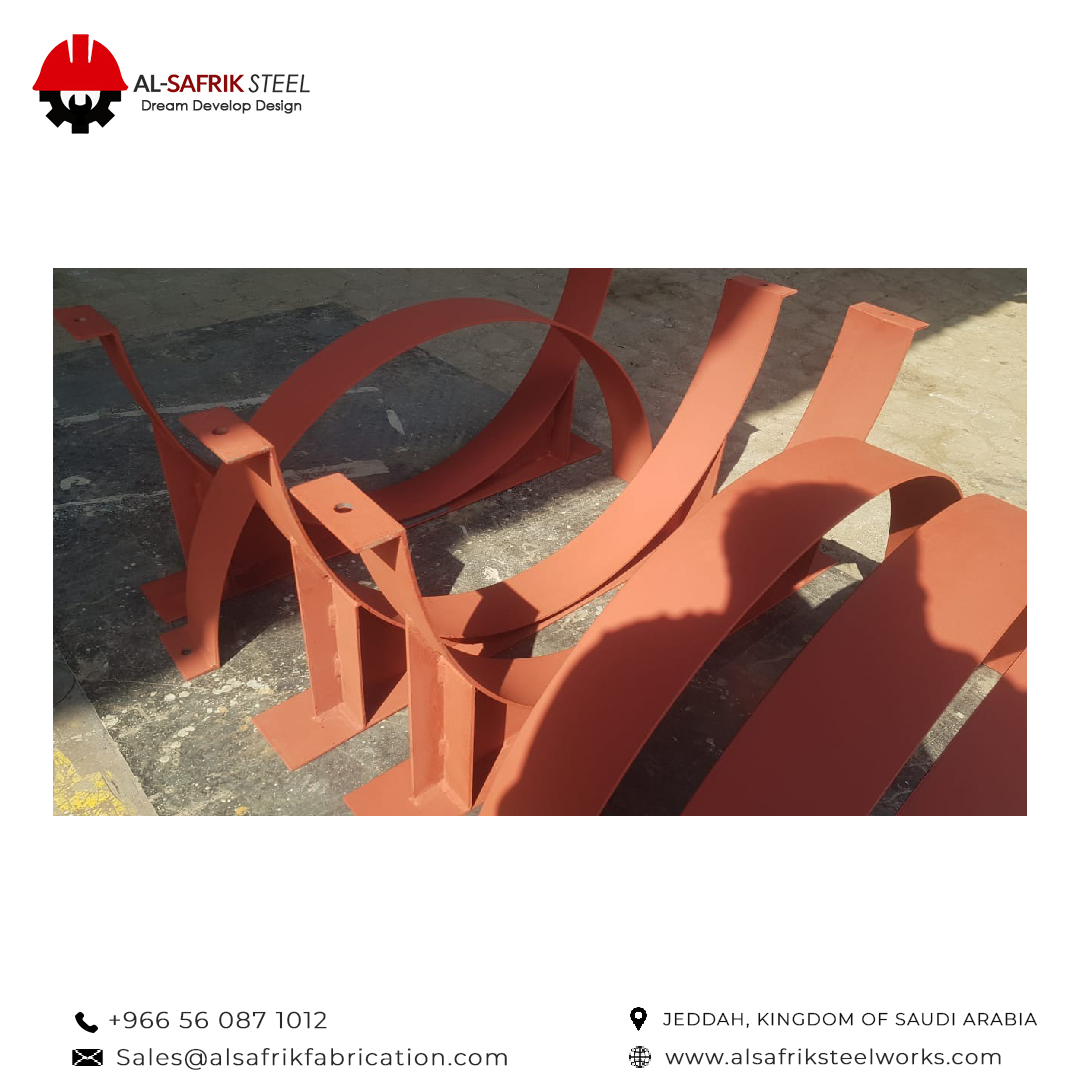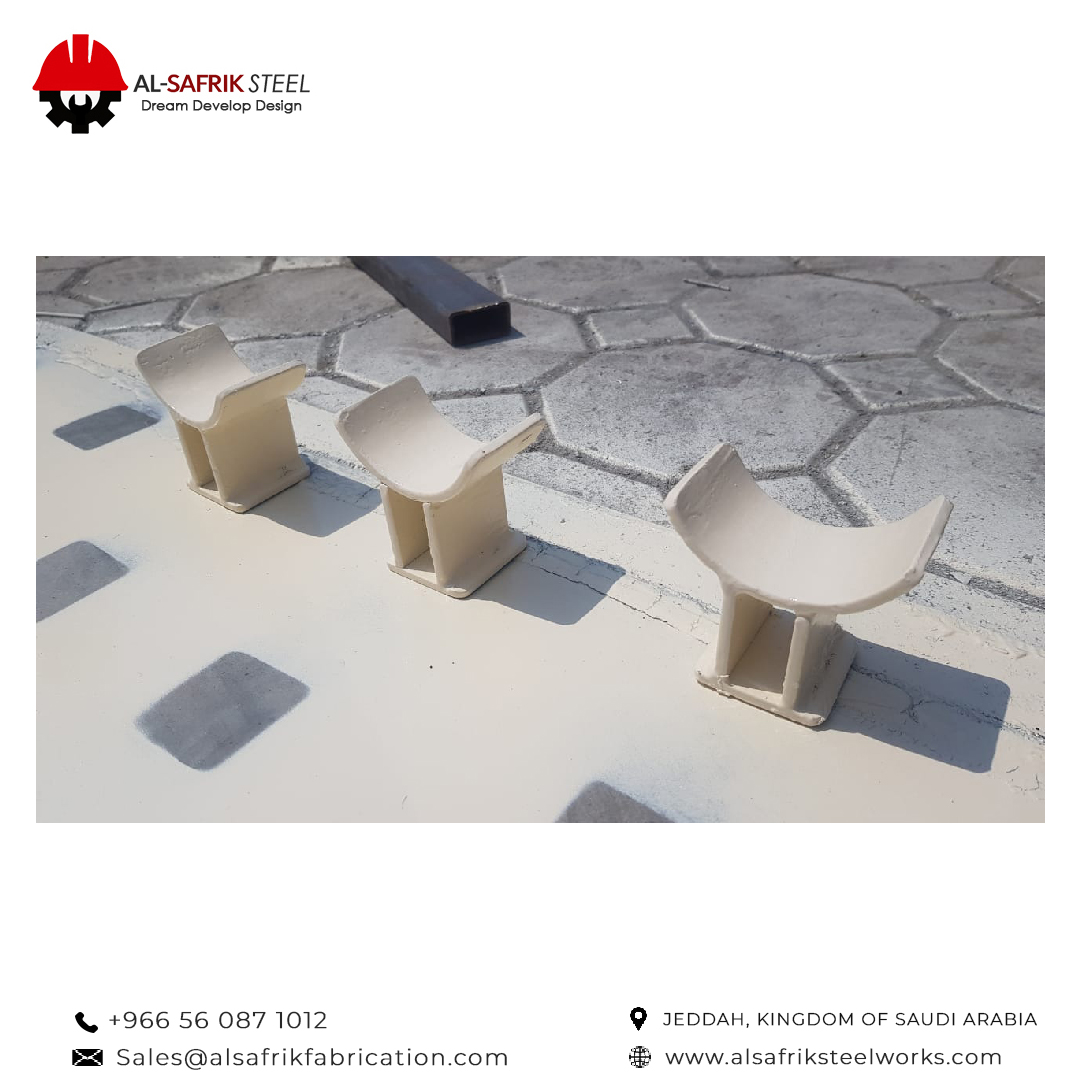Pipe Supports
Pipe supports are commonly used in industries that make use of heavy pipes. They are special objects designed to transfer the weight of pipes to a supporting structure. This helps in reducing the stress from pipes. These special supports play a crucial role in pipes’ safety. That is because heavy pipes that span long areas become weak over time.
Without proper support, they can lose their structural integrity. Moreover, environmental factors such as winds can also cause damage to the pipes. With supports installed, the pipe is given an extra anchor point. This takes all of the extra stress off the pipes. It also increases the structural integrity of the pipes. In addition to that, they help in reducing vibrations in the pipes.

How can pipe supports be classified?
There are three basic categories of these supports. They are classified based on general details, structural details, and functional details. They can be found listed below as follows:
General classification of supports
Generally, the supports are classified into two categories. They are:
a. Primary supports
Primary supports are the ones that attach directly to the pipe. They help in ensuring the stability of pipes. They also improve the overall integrity of the pipe systems. Examples of primary supports are shoe support, clamp support, etc.
b. Secondary supports
Instead of attaching directly to the pipe, secondary supports attach to the foundation. This helps in reducing the vibrations and also controls excessive movements caused by winds. Examples of secondary support are support brackets, etc.
Structural classification of supports
Structurally, the supports are classified as follows:
a. Rigid pipe supports
As the name suggests, these supports are rigid. They don’t offer much flexibility and restrict the movement in at least one direction. These are a type of secondary support as they rest on the foundation.
b. Elastic supports
These supports are mainly used in pipes that experience a lot of vertical movements. Due to their construction, they help in controlling the vibrations caused by pressure, etc. To support the load a compression spring is used.
c. Adjustable supports
Adjustable pipe supports provide a bit more flexibility as they are adjustable. However, it does not mean that they are not rigid. They work great for supporting pipes. They are more suitable for pipes that may require adjustment over time.
Functional classification of supports
Keeping functionality in mind, the supports can be classified into the following types:
a. Loose support
These supports allow movement in other directions but restrict only the vertical downward position. It can be helpful for applications that need free movement elsewhere.
b. Longitudinal guides
These supports allow movement in a longitudinal position. However, they restrict the movement only in the direction perpendicular to the pipe. This is also known as transverse direction. They can also be paired with loose supports.
c. Transverse guides
Transverse guides are mostly similar to longitudinal guides. However, they have one major difference that separates them. Instead of allowing movement in a longitudinal position, it restricts it. A free movement in a transverse position is allowed.
d. Fixed-point supports
Fixed-point supports restrict movement in all positions. However, rotational movement is allowed.
e. Anchor supports
Anchor supports are a bit similar to fixed-point supports. However, they restrict all sorts of movements including rotational movements.
f. Limit stop supports
These supports allow movement in all directions but up to a certain limit.
What are the common types of Pipes Supports?
Based on the specifications mentioned above, pipe supports come in the following types:
Pipe Hangers
Pipe hangers are U-shaped hangers attached to the structure above. This allows them to hold the pipes. They come in various sizes and weights. This allows them to accommodate pipes of different sizes. They are also adjustable which allows them to be adjusted vertically.
Pipe Clamps
These clamps provide stable support to the pipes. They are used in situations where minimal movement is required. Some clamps come with a layer of rubber. This allows them to dampen vibrations as well as reduce noise. They are known as cushioned clamps. They are great for use where pipe noise is a problem.
Pipe Saddles
These supports are placed underneath the pipes. They are commonly used to support horizontal pipes. These can be useful for instances where pipes run for longer horizontal areas.
Clevis Hangers
These pipe supports are U-shaped. They attach to a beam or other structural element. They are used to provide horizontal pipes. Moreover, they also allow some movements for pipes.
Shoe Supports
These supports attach at points where pipes change direction. In addition to that, they can also be used at points where pipes encounter obstacles. To enhance stability, they come with base plates. These allow them to be secured properly.
Spring Hangers
These supports come with springs. This allows them to absorb and dampen vibrations. To stop pipe movements, they are paired with guides and anchors. They can be very useful where the goal is to control pipe movements and vibrations.
Trunnion Supports
Trunnion supports are dummy pipes that are welded to the main pipes. This bond makes the dummy pipes a rigid part of the pipeline. These supports can be installed both horizontally and vertically.
What types of loads can a pipe be expected to bear?

Deadweight
Deadweight refers to the weight of the pipe itself as well as the fluids it carries. On top of their weight, pipes also bear the weight of pipe fittings. All of these individual weights accumulate and form dead weight.

Internal / External pressure
Based on the type and quantity of fluid inside the pipes, their internal and external pressures can vary drastically. Moreover, it can vary based on environmental factors as well. This can add stress to the pipes over time and cause damage.

Wind load
Quite often than not pipes are installed in windy areas. Winds themselves are not bad for the pipes. However, they can cause them to shift from their original place. Especially in high-wind and high-altitude areas. The shift in the pipe’s position can cause severe damage to it over time.

Vibrations
Vibrations can be introduced in pipes due to rattling machines, earthquakes, etc. Over time this can cause problems for piping systems. They can even cause the pipe fittings to come loose.
What are the benefits of pipe supports?
Pipe supports offer many benefits for their users. They are listed below as follows:
- They secure the pipes and ensure they don’t shift their position.
- They help in reducing pipe vibrations.
- They help in taking load off the pipes.
- They help protect pipes from natural factors such as wind load.
What can Al Safrik Steel offer to make your pipes secure?
Al Safrik Steel manufactures steel products in Saudi Arabia. Our products are designed for a wide range of use cases. We manufacture pipe supports from 100% steel. Our supports come in different types, shapes, and sizes. This is crucial for ensuring your pipe’s safety and durability. To get support for your pipes place an order here.






